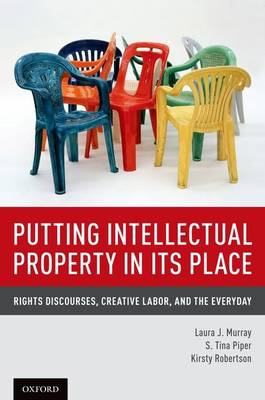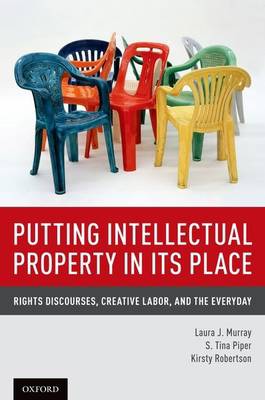
Door een staking bij bpost kan je online bestelling op dit moment iets langer onderweg zijn dan voorzien. Dringend iets nodig? Onze winkels ontvangen jou met open armen!
- Afhalen na 1 uur in een winkel met voorraad
- Gratis thuislevering in België vanaf € 30
- Ruim aanbod met 7 miljoen producten
Door een staking bij bpost kan je online bestelling op dit moment iets langer onderweg zijn dan voorzien. Dringend iets nodig? Onze winkels ontvangen jou met open armen!
- Afhalen na 1 uur in een winkel met voorraad
- Gratis thuislevering in België vanaf € 30
- Ruim aanbod met 7 miljoen producten
Zoeken
Putting Intellectual Property in Its Place
Rights Discourses, Creative Labor, and the Everyday
Laura J Murray, S Tina Piper, Kirsty Robertson
Hardcover | Engels
€ 201,45
+ 402 punten
Omschrijving
Putting Intellectual Property in its Place examines the relationship between creativity and intellectual property law on the premise that, despite concentrated critical attention devoted to IP law from academic, policy and activist quarters, its role as a determinant of creative activity is overstated. The effects of IP rights or law are usually more unpredictable, non-linear, or illusory than is often presumed. Through a series of case studies focusing on nineteenth century journalism, "fake" art, plant hormone research between the wars, online knitting communities, creativity in small cities, and legal practice, the authors discuss the many ways people comprehend the law through information and opinions gathered from friends, strangers, coworkers, and the media. They also show how people choose to share, create, negotiate, and dispute based on what seems fair, just, or necessary, in the context of how their community functions in that moment, while ignoring or reimagining legal mechanisms. In this book authors Murray, Piper, and Robertson define "the everyday life of IP law", constituting an experiment in non-normative legal scholarship, and in building theory from material and located practice.
Specificaties
Betrokkenen
- Auteur(s):
- Uitgeverij:
Inhoud
- Aantal bladzijden:
- 224
- Taal:
- Engels
Eigenschappen
- Productcode (EAN):
- 9780199336265
- Verschijningsdatum:
- 17/01/2014
- Uitvoering:
- Hardcover
- Formaat:
- Genaaid
- Afmetingen:
- 160 mm x 236 mm
- Gewicht:
- 453 g

Alleen bij Standaard Boekhandel
+ 402 punten op je klantenkaart van Standaard Boekhandel
Beoordelingen
We publiceren alleen reviews die voldoen aan de voorwaarden voor reviews. Bekijk onze voorwaarden voor reviews.











